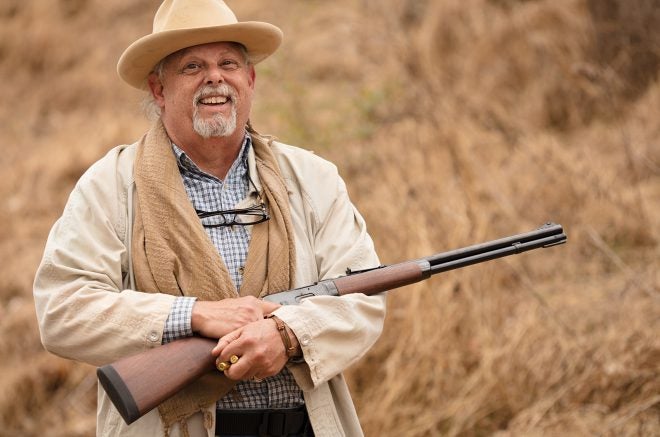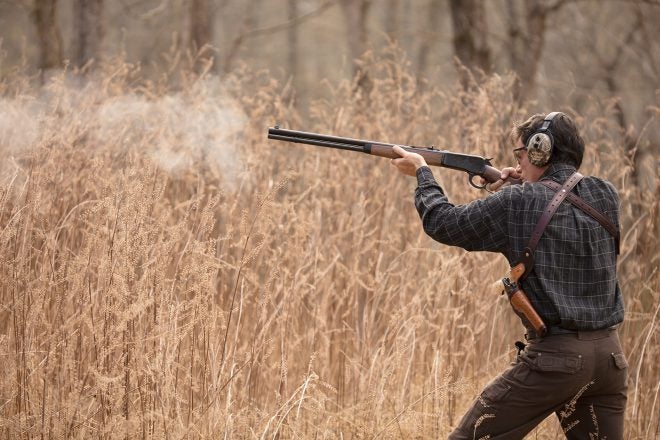The Iconic Winchester 1886 Rifle
Oleg Volk 11.02.17

Made for Winchester in Japan, the modern 1886 is a visually appealing rifle with nice fit and finish. It comes in two flavors: the classic-looking case hardened 45-70 Govt. and ported blued finish 450 Marlin. Long sight radius, strong action, and powerful chamberings make this gun a contender for hunting or defense.
45-70 Govt. has always been a very adequate round. 450 Marlin is at least 50% more potent at the muzzle. Modern polymer-tipped ammunition improves external ballistics even more. Accuracy, while no better than 3 MOA, is entirely reasonable for an iron-sighted rifle that’s usually fired unsupported.
The guns, however, have two issues making them suboptimal for defensive use. The first one is minor: the loading gates on both rifles are sticky and made with sharp edges. That’s especially obvious on the 45-70, with gate edges cut straight. Not only do they deform soft lead bullet tips, they also catch fingers.
In the video, you can see how the rounded-off gate on the 450 also presents its share of loading problems.
You can also see how short-cycling of the gun can happen without the shooter realizing the problem. Unlike a pump action, lever motion is in the same direction as muzzle rise, slowing recovery from recoil.

With 8+1 capacity, reloading might not be the most pressing problem. However, these rifles are also burdened with tang “lawyer safeties” that block only the firing pin. To the shooter, pulling the trigger on an accidentally-safed rifle is no different than a misfire, a mis-feed, or an empty chamber due to the exhaustion of ammunition: the hammer drops with a clunk, but no shot is fired.
The most obvious remedy is cycling the action to replace the misfired round, but when the safety is the problem all that does is eject a live cartridge, replacing it with another. Pulling the hammer on the second round won’t fire it either. So a shooter could easily “misfire” and cycle several shots before realizing the safety is at fault. A safety which blocks the trigger or the sear, or a hammer at half cock, would have signaled the “safe” state of the gun much more obviously.
If these concerns aren’t significant to you, the 1886 is only a pair of sling swivel studs away from being field-ready.


